
8 minute read
ALICE MANN
Much of Keyezua’s work focuses on representations of cultural identity, combined with issues of gender and shared personal experiences. The Luanda-based visual artist was born in Angola and raised in the Netherlands, where she studied at the Royal Academy of Arts in The Hague. Her latest project, Fortia (2017), featuring figures in blood-red ballgowns wearing full-face masks posed against craggy desert rocks, incorporates photography, text and audio, and explores her emotions about the death of her father. Here she speaks on women’s voices and the celebration of life through loss.
KEYEZUA
Advertisement
NOSMOT GBADAMOSI You produced Fortia as a homage to your father’s disability, can we discuss this? KEYEZUA “Fortia” is a Latin word for strength. My father had both of his legs amputated in the last years of his life because of a sickness. I lost my father very young, and by talking about this I wanted to interact with other people that were going through the same type of experiences. I also wanted to explore disability in a very different way, because the images that I’d been looking for online, just to understand what my father was going through, existed as an NGO image or an image of pity or sadness. In the last days of my father’s life I could see that there was something more meaningful, more beautiful than that.
NG What do the masks symbolise in the images? K Traditionally African masks were made for rituals and have specific uses. For this project, each mask was handmade especially by a group of disabled male artists, and each one relates to certain points in my life when I had the most difficulty growing up. You have one mask that says, ‘This is not a funeral, this is life,’ which is about the moment I understood that when someone dies, there is still a lot of their life left on this earth. The emotions that stay, the happiness that stays; the things that you learned with the person. I went through this process of thinking that if this mask should exist, it should have meaning and be part of a new ritual.
NG You’ve talked before about “breaking the prejudice against Africa through the media”. What is the role of photography in this? K As a photographer I try to be very careful about the images that I create because I don’t want to contribute to the negative images of Africa. When a work is exhibited, you are starting a conversation and confronting visitors with the things you want to talk about. There is no such thing as ‘African photography’ — my images come from my perspective as an Angolan, Dutch, female artist telling stories that need to be put out there. We don’t need the recognition of CNN or a politician to be seen and heard.
NG The #metoo campaign is starting to filter through Africa, what do you think about this? K It’s difficult to talk about these issues in Angola because the campaign is much more active in countries that speak English. But as a Portuguese-speaking country, we are also making noises about the rights of women at the moment and women feel more able to protest. Now that it is easier to visit Angola because of visa requirement changes, I believe this also permits us to continue to develop what we understand as a #metoo campaign.
NG So what’s next? K Now that Black Panther is out, people are a lot more curious about Africa and asking, ‘What is this Wakanda about?’ I want to continue to be a contributor of positive images from my part of the continent, and to hopefully continue to have conversations outside of my comfort zone in the countries where it is needed the most.
1 Afroeucentric Face On, 2016, 23.4 x 16.5in,
Digital C Print, 1 of 5 + AP, $2,800. 2 Afroeucentric Face On, 2016, 23.4 x 16.5in,
Digital C Print, 1 of 5 + AP, $2,800. 3 Sailing Back to Africa as a Dutch Woman, 2017, Fortia, 33.3 x 46.8in, Digital C Print, 1 of 3 + AP, $4,000. 4 Nothing, 2017, 16.5 x 11.7in, Digital C Print, 1 of 5 + AP, $2,000. 5 Royal Generation, 2016, 33.3 x 46.8in,
Digital C Print, 2 of 5 +AP, $5,000. 6 I Am Not a Demon Who am I?, 2016, 23.4 x 16.5in, Digital C Print, 1 of 5 + AP, $1,500. 7 When Abortion Was Illegal!, 2015, 16.5 x 11.7in, Digital C Print, 1 of 5 + AP, $1,500. 8 Stone Orgasms, 2016, 23.4 x 16.5in,
Digital C Print, 1 of 3 + AP, $3,500.
1
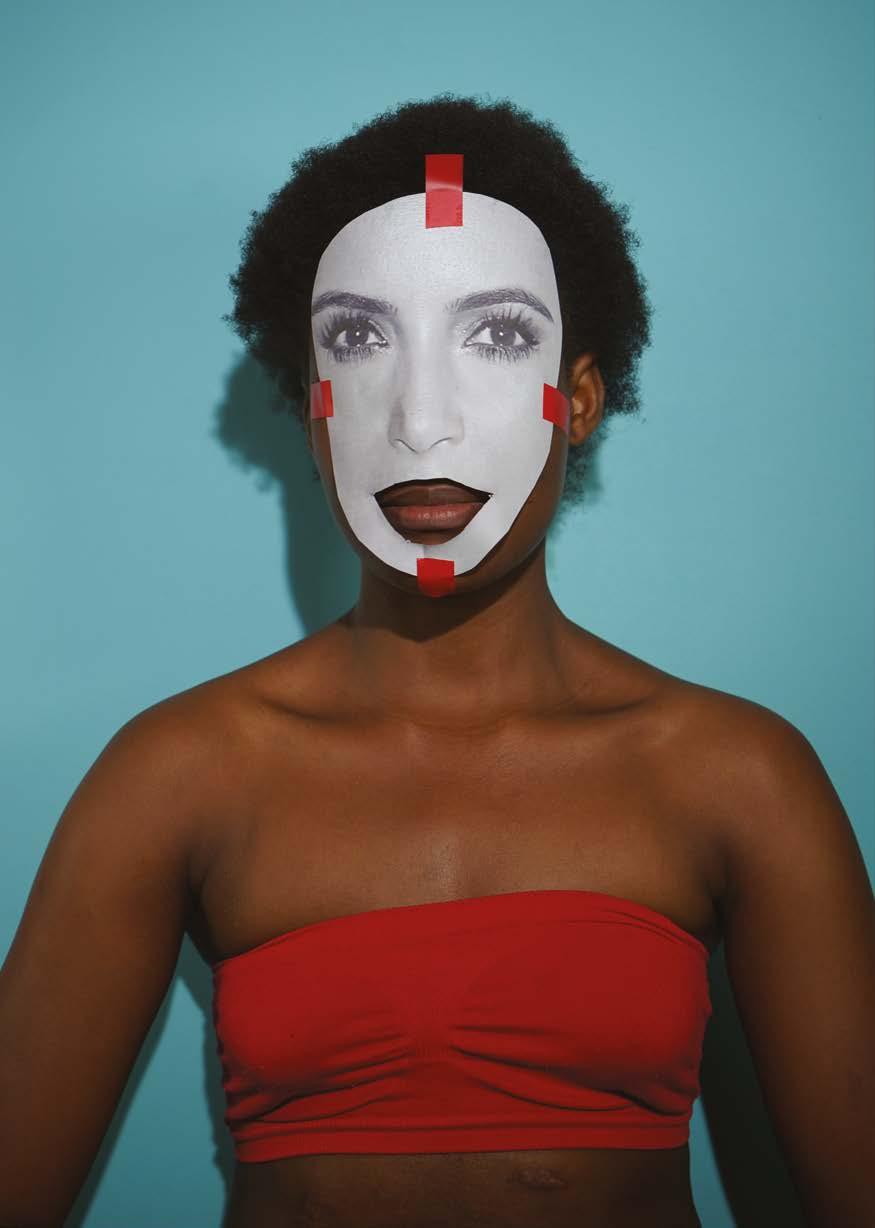
2
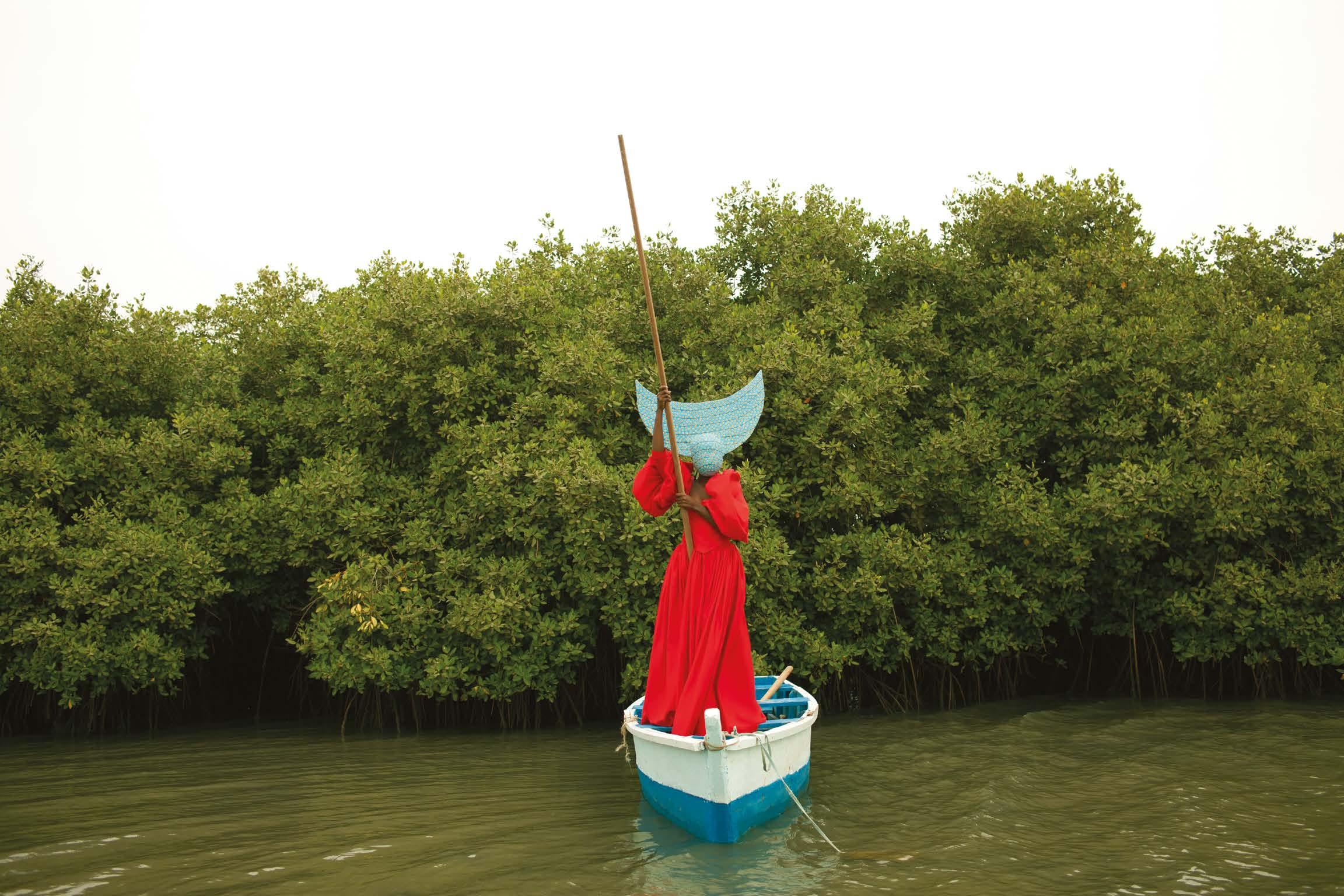
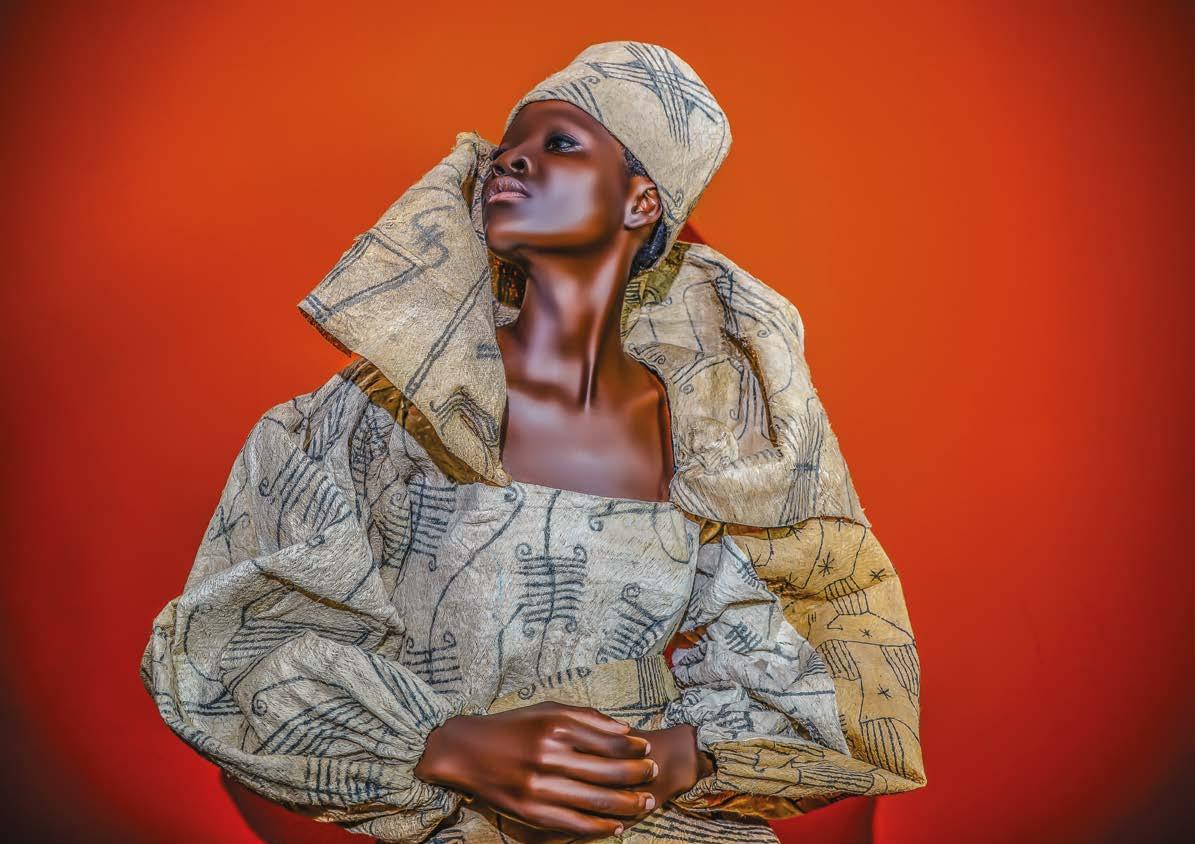
5
4

6
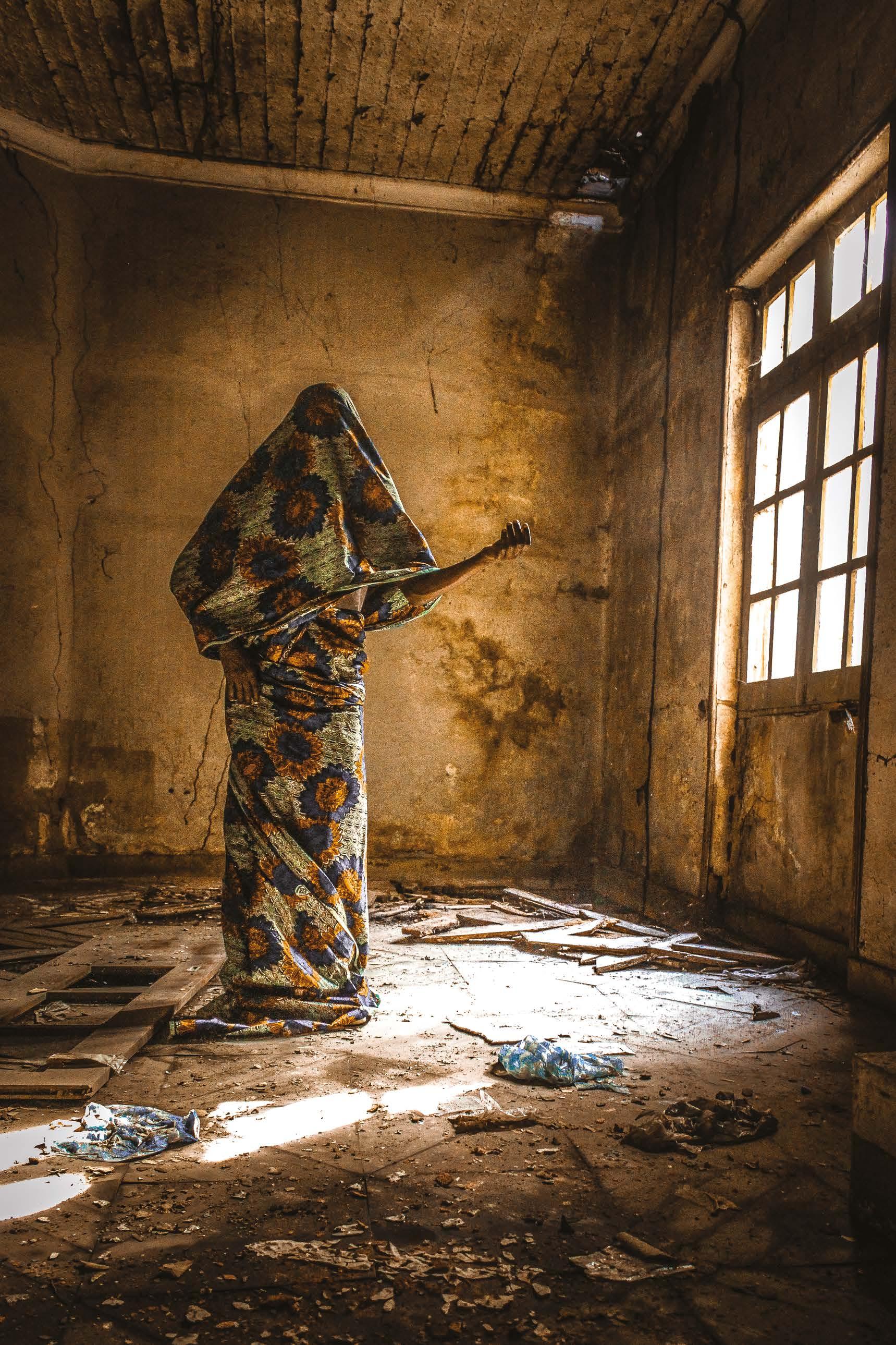
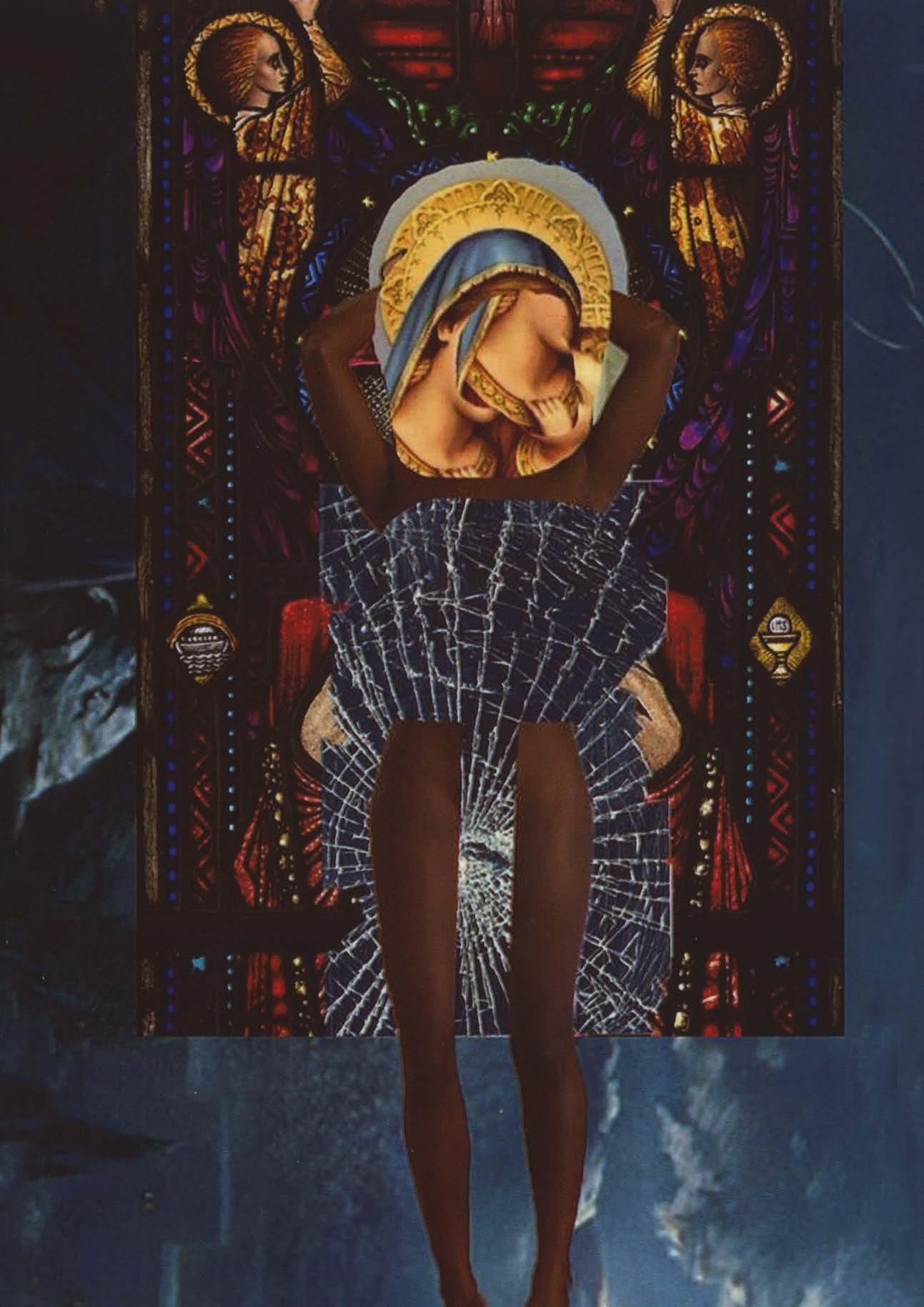
7

8
Schooled in England, Nigerian photographer Rahima Gambo sees her country through two sets of eyes. The eyes of a child born in Lagos and with a home in Abuja, and the eyes of a British school and university student with a journalism masters from Columbia University. Gambo’s exploration of photography and video began during her time in New York, and continued to develop when she returned to Abuja, aged 21. Her previous series, Exiled from Home, focuses on the growing number of gay Nigerian men who have fled to the United States seeking asylum and a more liberal society. Her current multimedia project, Education is Forbidden, shares the experiences of students in schools and universities in northeast Nigeria after the Boko Haram insurgency, and offers an intimate glimpse into the young people’s interior worlds.
RAHIMA GAMBO
KATIE DE KLEE Do you believe documentary photography should always be truthful and objective? RAHIMA GAMBO Truth is subjective. I always approach a story with the intent to tell my version of the truth. My worldview and biases determine the kind of images I create. So a certain intervention on myself has to take place before I start making images. I always question my assumptions and stay open to looking at them with a certain critical awareness.
KDK Tell us about the inspiration for Education is Forbidden. RG The idea for the project was sparked after the Chibok girls were abducted from their secondary school and attacks on schools and students were occurring on a regular basis. I wanted to find out how students were experiencing this. My hometown is in northeastern Nigeria, so I was naturally drawn to the issue.
KDK How do you want people to respond to your work? RG My intention is to present an alternative to what anyone may expect from a certain story. So at the very least, they might find the images refreshing. I make a point of staying away from visual clichés.
KDK What is your creative process? RG I always begin with an inquiry, a question that takes me into a sort of reporting and research phase where I do a lot of audio interviews with my subjects. It is from these conversations that I find visual cues and directions. Making images is usually the last step in a long process.
KDK Did you spend a lot of time with the students in the images? RG I interviewed many students. They all had a range of experiences, but what drew them together was a sense of vulnerability, a sense that they were going through this event that could determine the trajectory of their lives. I wrote about their experiences on the Education is Forbidden website.
KDK What kind of impression did they leave on you? RG Their memories became my memories. They were very much independent thinkers; each student I met had their own analysis of their situation and relationship to the Nigerian government.
KDK How does Education is Forbidden compare with the rest of your work? RG Education is Forbidden was my first attempt to find my voice as a storyteller and an artist, rather than as a photojournalist telling a certain story for news publishers.
RAHIMA GAMBO is currently working on the Education is Forbidden photobook, which will be published by Fourthwall Books in Cape Town
1 Amina and Zainab playing a clapping game, 2017, Tatsuniya, 27x40in, Digital print on archival paper, 1 of 7, $800. 2 Ruth, Amina and the three Aisha’s play
‘In and Out’, 2017, Tatsuniya, 27x40in,
Digital print on archival paper, 1 of 7, $1,000 3 Hadiza and Ruth play ‘In and Out’, 2017,
Tatsuniya, 27x40in, Digital print on archival paper, 1 of 7, $800. 4 Amina playing ‘In and Out’, 2017, Tatsuniya, 27x40in, Digital print on archival paper, 1 of 7, $800. 5 Ruth playing ‘In and Out’, 2017, Tatsuniya, 27x40in, Digital print on archival paper, 1 of 7, $800. 6 School girls with candles (1), 2017,
Tatsuniya, 27x40in, Digital print on archival paper, 1 of 7, $800. 7 School girls with candles (2), 2017,
Tatsuniya, 27x40in, Digital print on archival paper, 1 of 7, $800. 8 School girls with candles (3), 2017,
Tatsuniya, 27x40in, Digital print on archival paper, 1 of 7, $800. 9 Rukkaya and Hadiza, 2016, Education is Forbidden, 16x20in, Digital print on archival paper, 1 of 7, $500. 10 School girls crossing river (1), 2017,
Tatsuniya, 27x40in, Digital print on archival paper, 1 of 7, $800 11 School girls crossing river (2), 2017,
Tatsuniya, 27x40in, Digital print on archival paper, 1 of 7, $800 12 School girls crossing river (3), 2017,
Tatsuniya, 27x40in, Digital print on archival paper, 1 of 7, $800.

1

2










